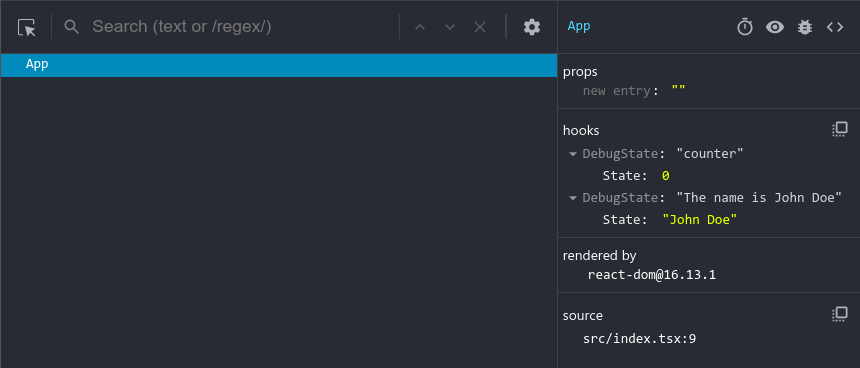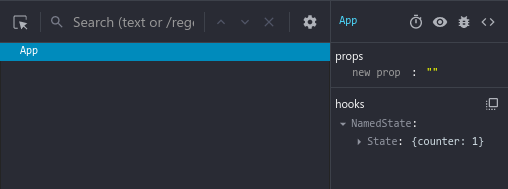README
use-named-state
React hook to use named state for easier debugging with almost no code change




Install
# Using npm
npm i -S use-named-state
# Using yarn
yarn add use-named-state
Motivation
Most of the time I edit state values directly in react devtools to achieve different state during development. But if there are too many states in a functional component, it gets tricky to know which state is what since they are represented without names in devtools. This is a way to solve that problem by naming the states.
| Before | After |
|---|---|
 |
 |
Available hooks
useDebugState()- Recommended
It uses useDebugValue internally to set debug name for the custom hook.API
i. StateName is a string
useDebugState<T>(stateName: string, stateValue:T)ii. StateName is a formatter function
This can be useful if state name needs to be computed or is derived from current state value
useDebugState<T>(stateName: DebugStateFormatter, stateValue:T, extraArgs?: any); type DebugStateFormatter<T> = (val: { state: T; extraArgs?: any }) => string;Usage
import { useDebugState, DebugStateFormatter } from "use-named-state"; const stateFormatter: DebugStateFormatter<string> = ({ state, extraArgs, }) => { return `${extraArgs.prefix} ${state}`; }; const extraArgs = { prefix: "The name is" }; const App = () => { // State name is string const [counter, setCounter] = useDebugState("counter", 0); // State name is a formatter function const [name, setName] = useDebugState<string>( stateFormatter, "John Doe", extraArgs ); return ( <> <button onClick={() => setCounter((prevCount) => prevCount + 1)}> {counter} </button> <input onChange={(e) => setName(e.target.value)} value={name} /> </> ); };
Result

useNamedState()
It creates an object with key as state name and value as state.import { useNamedState } from "use-named-state"; const App = () => { const [counter, setCounter] = useNamedState("counter", 0); return <button onClick={(prevCount) => prevCount + 1}>{counter}</button>; };Result

Difference
If you use useDebugState, the state name is not leaked to the production build.
If you use useNamedState, the state names are leaked to the production build as well, as the state name is the part of state and not just a label. This might not be an intended side-effect
Build with ♡ by
Bhumij Gupta
if (repo.isAwesome || repo.isHelpful) {
StarRepo();
}


